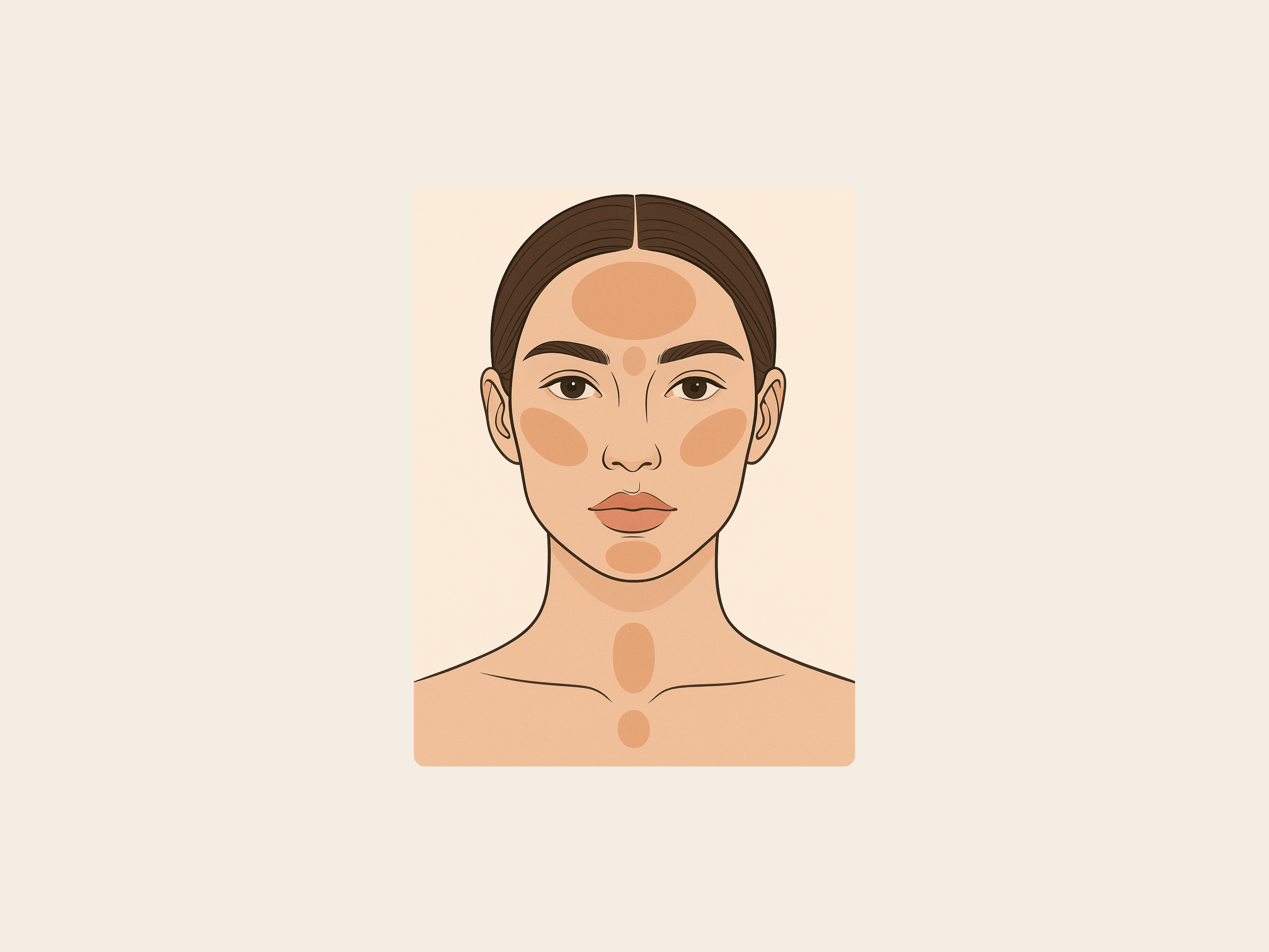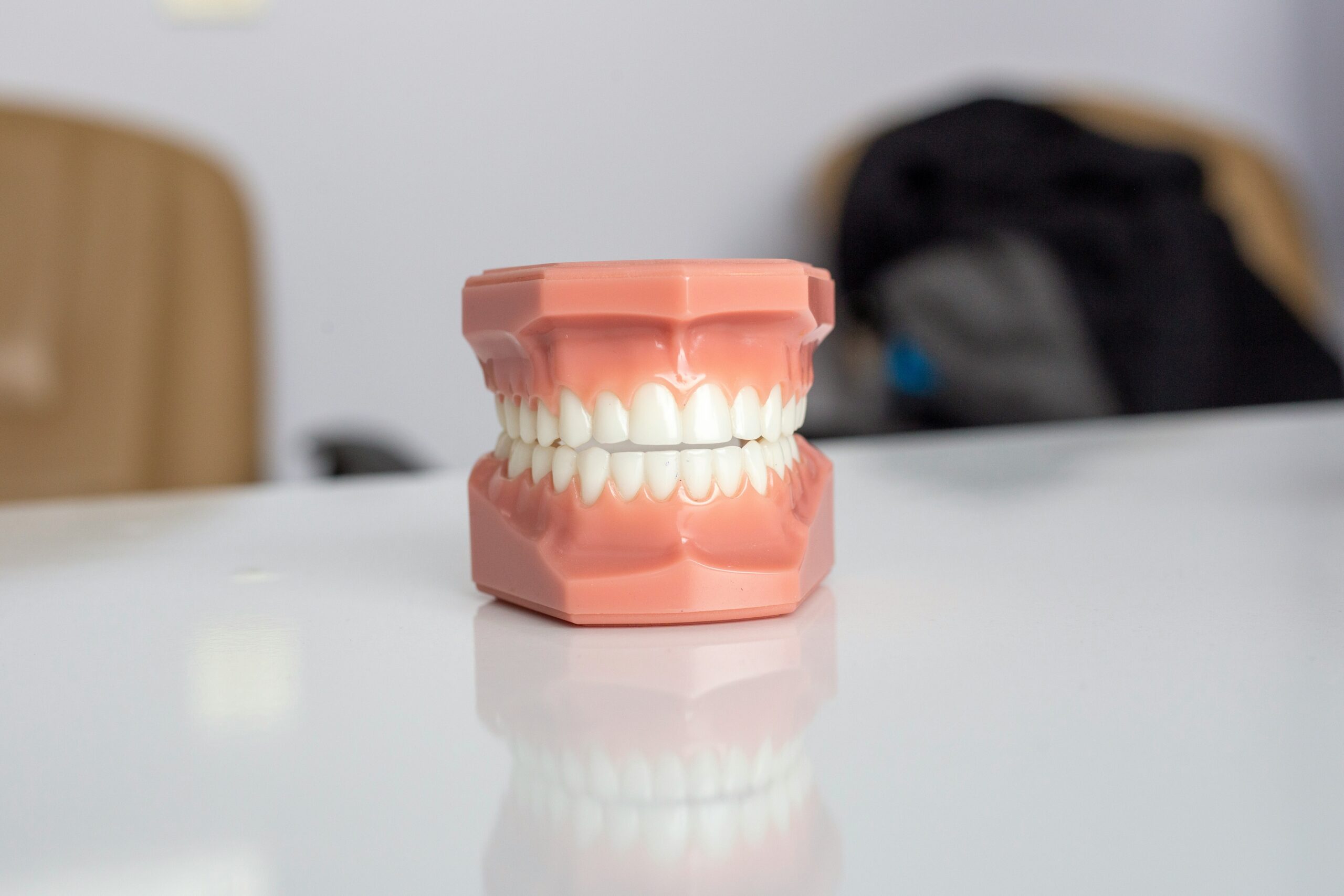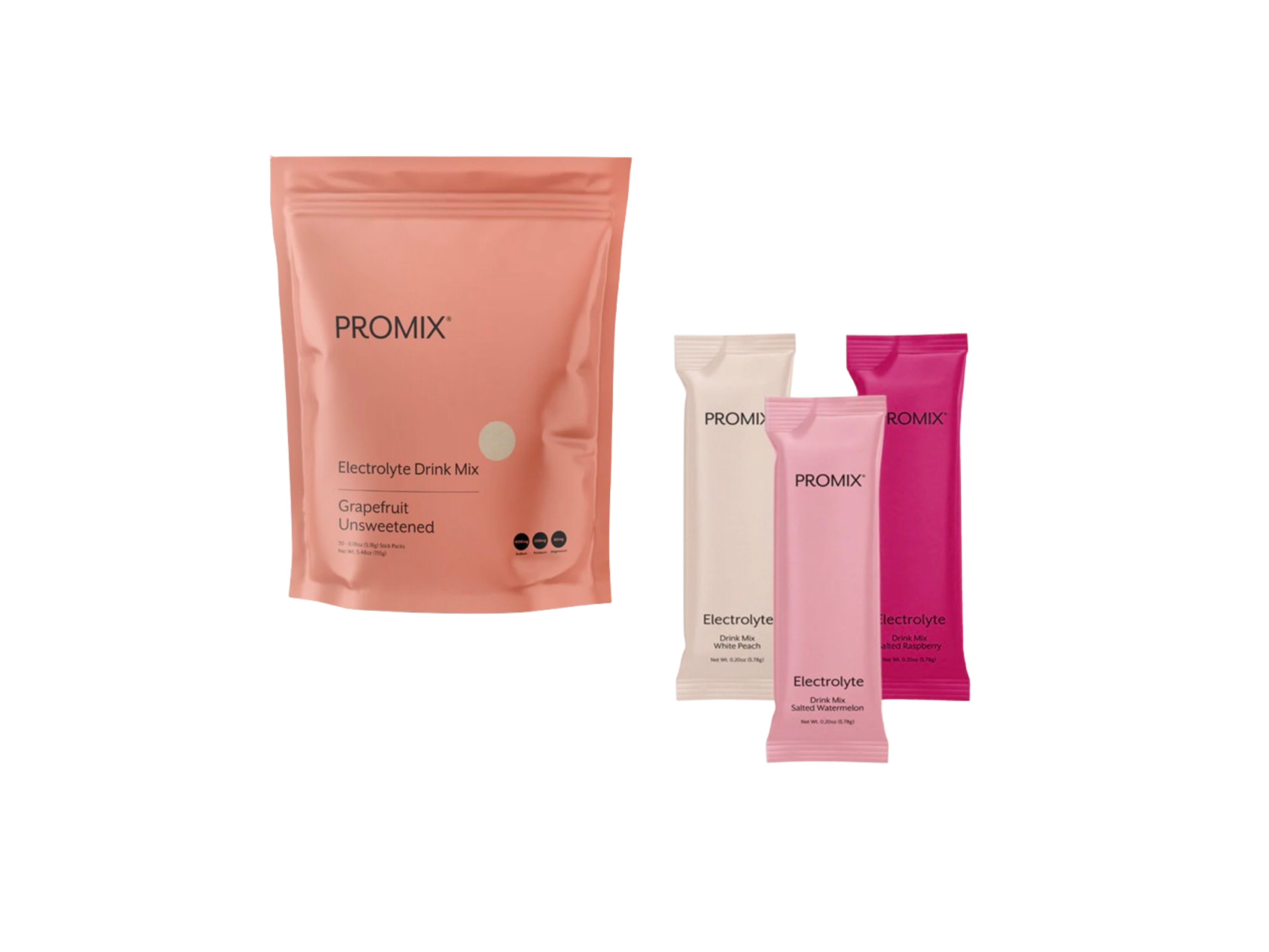
If you’ve ever noticed that your acne tends to pop up in the same places, chin, forehead, cheeks, you’re not imagining things. According to the concept of the acne face map, where your pimples appear can sometimes be an indicator of deeper issues. Think of it as your skin sending you little signals about what’s going on inside your body, whether that’s hormones, organ health, or even lifestyle habits.
Of course, not every breakout is a red flag for a serious issue. Sometimes acne is just clogged pores from makeup or sweat. But consistent patterns can be a helpful clue in understanding what your skin is trying to tell you.
Forehead: Oil Production, Digestion, Sleep, and Stress
Breakouts on the forehead are often linked to excess oil production and clogged pores, but biology gives us more detail:
- The forehead has a high concentration of sebaceous glands. When oil production ramps up (often due to stress hormones like cortisol) it’s one of the first places you’ll see it.
- Poor sleep can raise cortisol too, which stimulates more sebum (oil) and inflammation, both of which worsen acne.
- Digestion issues can play a secondary role since poor gut health is linked to systemic inflammation, which can trigger skin flare-ups here.
Between the Brows: Liver & Detox Pathways
That annoying pimple between your eyebrows may not just be coincidence.
- Your liver’s job is to process toxins, hormones, and byproducts of metabolism. When it’s under stress (think alcohol, high-fat diets, or medications), your body can release excess waste through the skin.
- This area often shows inflammatory acne, suggesting the liver is struggling to balance hormones or clear toxins efficiently.
Nose: Circulation & Oil Glands
The nose has some of the largest pores on the face and more oil glands, which is why blackheads and whiteheads are common here.
- Oily buildup and bacteria (like Cutibacterium acnes) thrive in this area.
- Because the skin on the nose is thin and highly vascular (lots of blood vessels), it can also show redness or breakouts linked to cardiovascular strain, high blood pressure, or diets high in alcohol.
Cheeks: Lungs, Air Quality & Hygiene
Cheek breakouts can come from both environmental exposure and surface contamination:
- Air quality: Your cheeks are directly exposed to environmental irritants. If you live in a polluted area or smoke, toxins can clog pores and inflame the skin.
- Hygiene: Phones pressed against the face, dirty pillowcases, or unwashed makeup brushes spread bacteria. That bacteria mixes with oil in pores and leads to breakouts.
- Interestingly, studies have shown that people with respiratory issues or allergies may also be more prone to cheek acne due to chronic inflammation.
Chin & Jawline: Hormonal Imbalance
The most classic hormonal acne zone is the chin and jawline.
- Androgens (like testosterone) increase sebum production in the oil glands concentrated here. This makes pores more likely to clog, especially around your period or during hormone fluctuations (stress, birth control changes, PCOS).
- Breakouts here are often deep, cystic pimples because hormones trigger oil deep in the follicle.
Around the Mouth: Digestive Health & Stress Habits
Breakouts around the lips and lower cheeks can sometimes reflect digestive issues:
- Food sensitivities, constipation, or diets high in sugar and dairy may cause inflammation that manifests in this area.
- Frequent touching of the mouth (biting nails, resting hands on face) or heavy lip products can also clog pores here.
- Stress eating and spiking blood sugar also contribute, since insulin surges boost oil production and inflammation.
Why This Matters
The acne face map isn’t meant to replace medical advice, but biology shows us that there really are patterns:
- Hormones → jawline, chin
- Oil production/stress → forehead, nose
- Hygiene/environment → cheeks, around mouth
- Organ stress (liver, digestion, circulation) → between brows, mouth, nose
If you start noticing consistent patterns in your breakouts, it may be your skin’s way of flagging that something deeper (whether it’s hormones, diet, or lifestyle) is out of balance.

How to Heal Early Tooth Decay and Remineralize Naturally
I spent a year intentionally balancing my minerals, nourishing my body, and practicing natural oral care to successfully remineralize my teeth naturally and heal early decay.

Promix Electrolytes Review: The Best Unsweetened Electrolyte Powder I’ve Found
Promix Electrolytes are the cleanest, zero-sweetener hydration formula I’ve found, and as a daily runner I can feel the difference in my energy, stamina, and muscle recovery every single day.

Rosita Cod Liver Oil is the Best Omega-3 Supplement Hands Down
Rosita Cod Liver Oil is a pure, unprocessed omega-3 supplement that helped transform my dry skin, mood, and inflammation by correcting an underlying omega-3 deficiency.




